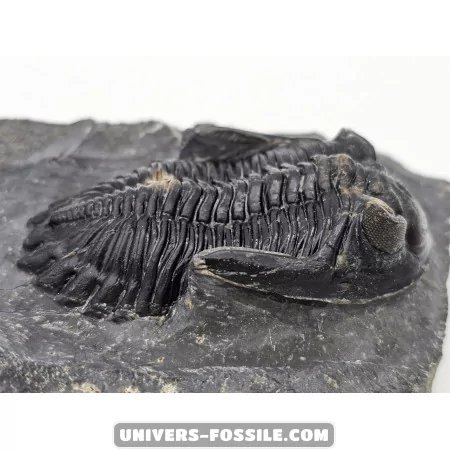Hollardops Trilobites - Explore the Fascinating Extinct Marine Life

Hollardops Trilobites
Hollardops trilobites are an extinct species of trilobites, a group of marine arthropods that thrived millions of years ago. These fascinating creatures were among the prominent inhabitants of the Paleozoic oceans, offering paleontologists valuable insights into ancient marine life.
Anatomy
- Segmented body: Like all trilobites, Hollardops had a body divided into three longitudinal parts - the cephalon (head), the thorax (body), and the pygidium (tail).
- Calcified exoskeleton: The outer shell of trilobites was formed of chitin and calcite, providing rigid protection against predators.
- Compound eyes: Hollardops trilobites possessed large compound eyes, consisting of many small hexagons, giving them a panoramic view of their environment.
- Antennae: Although few fossilized specimens have retained their antennae, it is likely that Hollardops had them to detect environmental stimuli.
- Segmented legs: Trilobites used their segmented legs to move along the seafloor, sifting through the sediment in search of food.
Hollardops Trilobites
Hollardops trilobites were fascinating creatures that roamed the ancient seas during the Middle to Upper Devonian period, around 390 to 370 million years ago. They played a crucial role in the marine ecosystem, serving both as predators and prey.
Habitat
Hollardops trilobites have been unearthed in geological formations worldwide, from Morocco to Germany, offering valuable insights into their distribution and evolution. These creatures thrived in a diverse marine environment rich in life forms, where trilobites reigned as significant players in the food chain.
Lifestyle
It is believed that Hollardops trilobites were benthic organisms that scoured the seafloor for sustenance. They subsisted on organic matter and small creatures that inhabited the substrate, employing their specialized appendages for feeding activities. Despite their sturdy exoskeletons providing some defense against predators, evidence suggests they were often preyed upon by cephalopods and predatory fish.
Extinction
With the passage of time, Hollardops trilobites, like their counterparts, faced extinction. They vanished from the Earth, leaving behind a legacy preserved in fossils that continue to captivate scientists and enthusiasts alike, shedding light on the ancient world they once inhabited.
Hollardops Trilobites
Trilobites, a group of marine arthropods, once thrived in ancient oceans, roaming the seabeds in search of food and shelter. These intriguing creatures eventually became extinct by the end of the Permian period around 250 million years ago, during the mass extinction event that wiped out most life on Earth.
The exact causes of trilobite extinction remain a topic of debate among paleontologists, but it is likely they were influenced by climatic changes, geological events, and evolutionary pressures. Despite their extinction, Hollardops trilobites and other members of their order continue to fascinate scientists and paleontology enthusiasts worldwide.
Their well-preserved fossils offer valuable insights into the biodiversity and evolution of ancient oceans, allowing us to better understand the history of life on Earth. In conclusion, Hollardops trilobites are fascinating examples of the diversity of ancient marine life.
Their fossils are precious treasures that allow us to travel back in time and explore the mysteries of prehistoric oceans.
